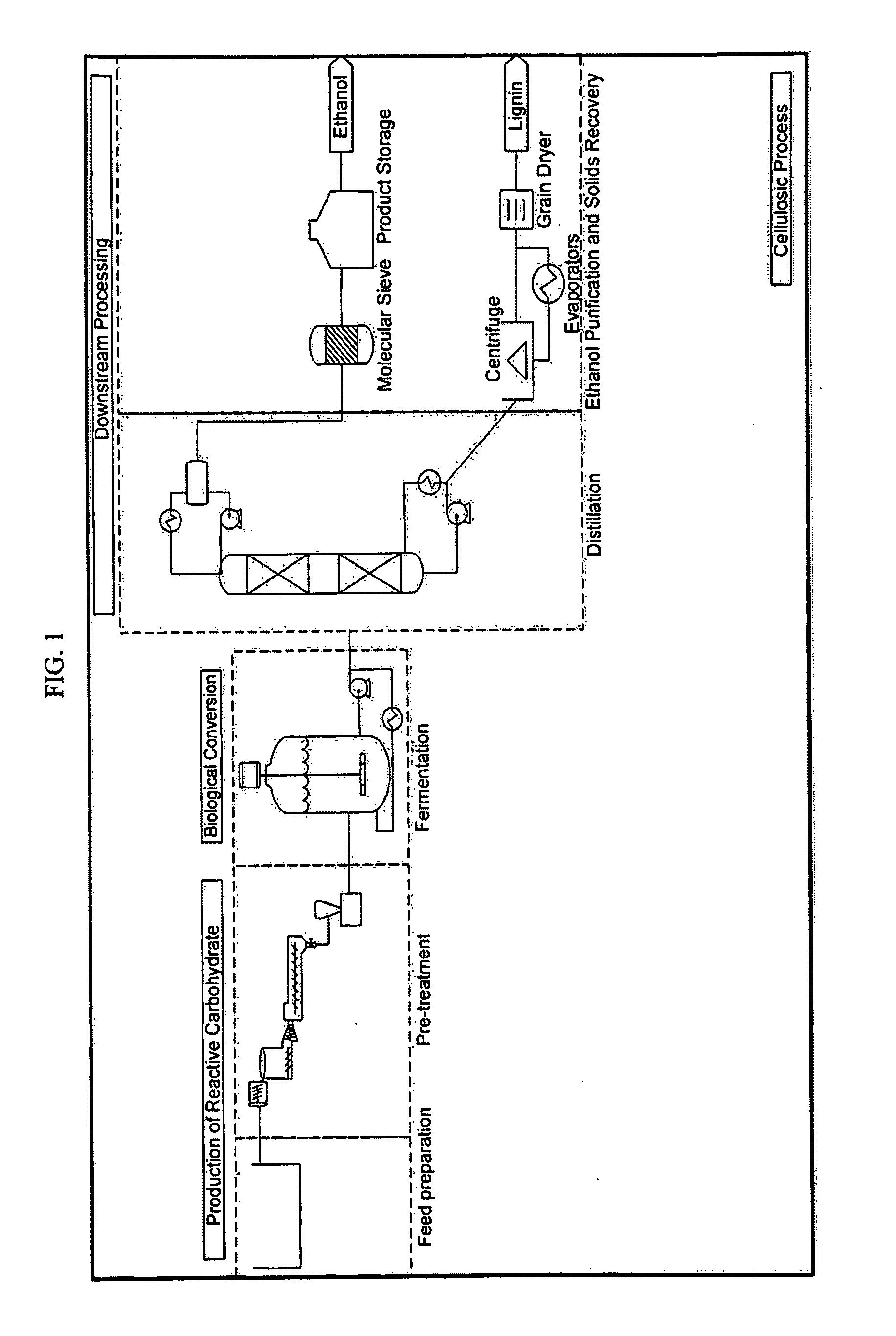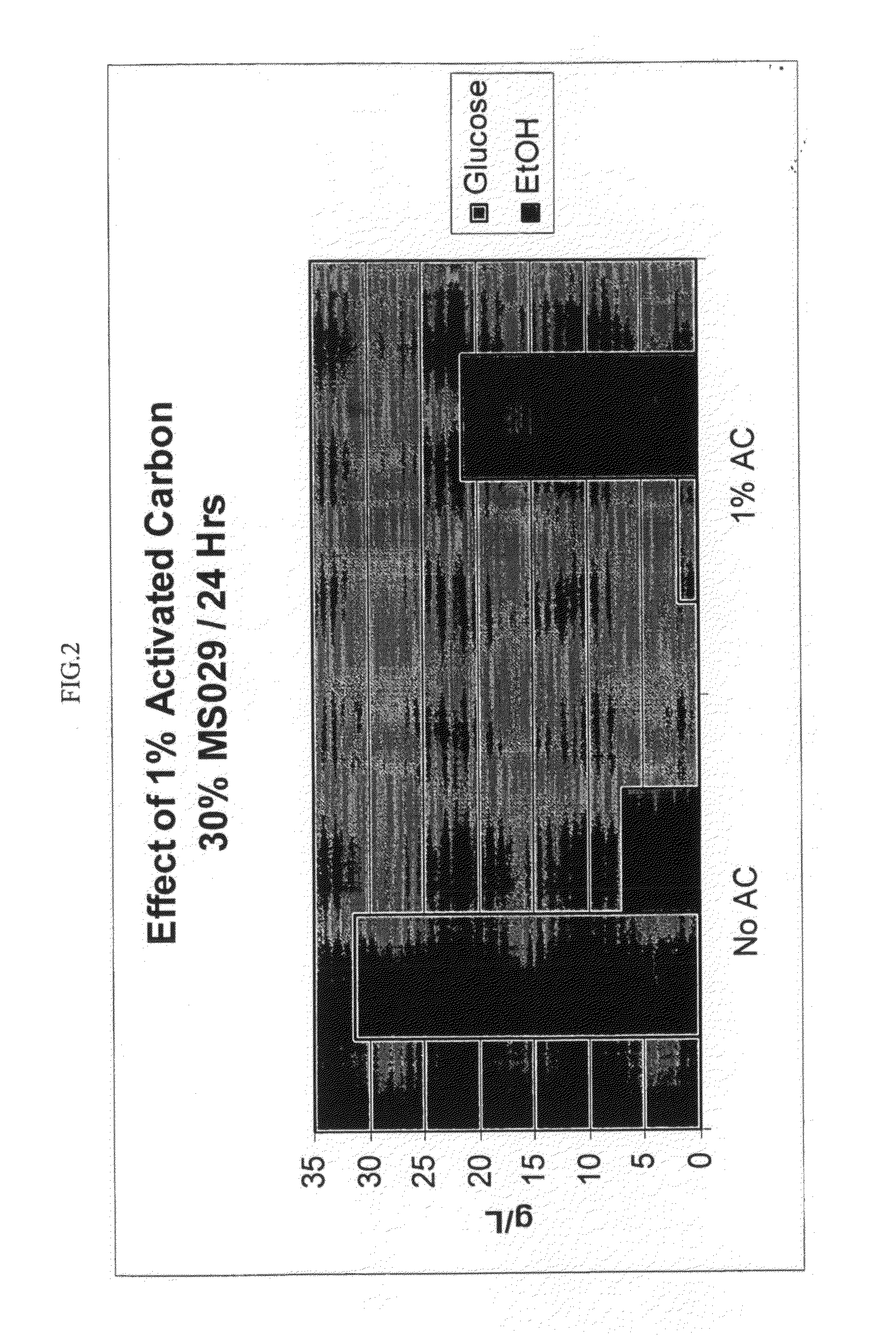Product Recovery From Fermentation of Lignocellulosic Biomass
- Summary
- Abstract
- Description
- Claims
- Application Information
AI Technical Summary
Benefits of technology
Problems solved by technology
Method used
Image
Examples
example 1
[0072]
TABLE 1A standard high solids (30%) SSF process1Autoclave empty fermentor for 30 min, add:402.57 g MS029 substrate (pre-treated at 160 psi for 10 minutes)7 ml 5M KOH100 ml 10X YP (yeast extract and peptone)5 mM MgSO425 mg Spezyme CP / g ODS (35.46 ml) (cellulase-breaksdown oligosaccharides)15 mg Novozyme 188 / g ODS (12.8 ml) (cleavesβ-glucosidase to glucose)107.73 ml DIH2O2Incubate @ 50° C., 500 rpm for 2 hrs, add:201.28 g MS0293.2 ml Novozyme 188*10 g Activated Carbon (Sigma # 242268)3Incubate at 50° C., 500 rpm for 1 hr4Reduce temp. To 30° C., agitation to 250 rpmAdd 3 mg penicillin G (Sigma # P7794)5Inoculate (10% V / V) and ferment
PUM
| Property | Measurement | Unit |
|---|---|---|
| Fraction | aaaaa | aaaaa |
| Fraction | aaaaa | aaaaa |
| Fraction | aaaaa | aaaaa |
Abstract
Description
Claims
Application Information
 Login to View More
Login to View More - R&D
- Intellectual Property
- Life Sciences
- Materials
- Tech Scout
- Unparalleled Data Quality
- Higher Quality Content
- 60% Fewer Hallucinations
Browse by: Latest US Patents, China's latest patents, Technical Efficacy Thesaurus, Application Domain, Technology Topic, Popular Technical Reports.
© 2025 PatSnap. All rights reserved.Legal|Privacy policy|Modern Slavery Act Transparency Statement|Sitemap|About US| Contact US: help@patsnap.com



